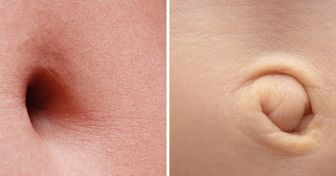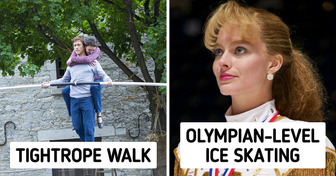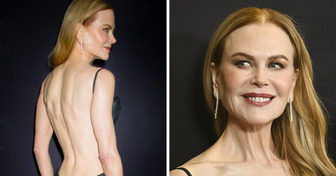23 Real-Life Stories That Are Actually Better Than Any Romance Novel

Can you imagine spending years of your life perfecting your skills to create something unique, only to see all the credit for your work go to someone else? That’s what happened to artist Margaret Keane, who had to fight a court battle against her own ex-husband, who claimed authorship of her canvases and made millions from selling them, in order to be recognized for her creations. Her story was told in the 2014 film, Big Eyes, showing the public the truth about one of the biggest frauds in the art world.
At Bright Side, we were moved by the film and decided to share the true story of an artist’s struggle in the 1950s that inspired the plot of the script.
Born in 1927, in Tennessee, Peggy Doris Hawkins (or Margaret Doris Hawkins, as some sources claim) would later be known as the painter, Margaret Keane. The artist, who paid lots of attention to people’s eyes in order to better understand them after injuring her ear at the age of 2, entered the art world at the age of 10. At 18, she studied at the Traphagen School of Design in New York, where she stayed for 1 year. Shortly thereafter, in the 1950s, Margaret got a job painting cribs and baby clothes.
Early in her career, she liked to experiment with a style known as kitsch, which is characterized by works that have a popular appearance, sometimes referred to as “hackneyed.” To paint, she used everything from acrylic dyes to oils. At the same time, Margaret had divorced her first husband and moved to San Francisco, California.
She revealed that some of her biggest inspirations for her works came from artists like Vincent van Gogh, Pablo Picasso, and the way Amedeo Modigliani painted women. His paintings always showed children or animals with huge eyes with sad expressions, which later stood out from the other popular works of the time and delighted art collectors.
Shortly after moving to San Francisco with her daughter, she met Walter Keane, who, in 1955, became her second husband. Thanks to her, Walter changed his job from real estate to art. The marriage, however, was not so harmonious and went through a series of complications. He was known to be very jealous and, many times, Margaret had to produce his paintings even though she did not feel like doing so.
Walter, in spite of everything, made sure that production was not affected, and while he worked away, Margaret painted continuously. At that time, she hadn’t received an ounce of credit for her efforts.
Initially, her paintings were sold in a club in the city where she lived, called The Hungry i. She signed her art with the name, “Keane.” Walter was an excellent salesman and invested heavily in promoting the art that helped Margaret’s paintings gain great notoriety in the art circle, and they went on to sell for millions of dollars. This happened in the 1960s.
The works became so famous that they became known as “Keane eyes” or “big-eyed waifs.” Walter said he was inspired by the orphaned children he had met in his travels. Within a short time, Margaret’s work started getting used in designs for objects and other products on an industrial scale.
This drew negative reviews from specialists, although the public was enchanted by the unique and touching look of the paintings. What Margaret didn’t know (but would later find out) was that her husband was taking all the credit for her creations, which ended in a court battle and several years of struggle to gain the recognition she deserved.
Unaware that she was not being credited for her own art, Margaret couldn’t do anything about it. But after paying a visit to the club where her paintings were sold, she finally learned what was happening. Walter’s excuse was that customers would not buy paintings by a divorced woman.
After 10 years of their relationship, the marriage ended. Years later, she moved to Hawaii and remarried. Margaret exposed Walter’s lie in an interview on a radio show in the 1970s. In the 1980s, Walter made a statement, claiming that his ex-wife was lying, and she prosecuted him for defamation.
The trial began in 1986 and, on one occasion, the judge asked the 2 parties to paint a picture in front of everyone present. The intention was to determine the true authorship of the works. Walter refused, saying he had a sore shoulder, while Margaret accepted the challenge. In less than 1 hour, she presented to all the people who were following the case a painting that validated everything she had stated on that radio program 10 years prior.
Margaret won the lawsuit and the right to compensation in the amount of $4 million. However, she was unable to obtain any of the money she had accumulated from her own work during this farce that lasted for years because Walter had spent the entire fortune. He, in turn, continued to claim that he was the true author of the paintings until his death in the 2000s.
In 2014, director Tim Burton released the film, Big Eyes, which told the world Margaret’s story about her struggle for recognition and overcoming it. The cast featured actress Amy Adams in the role of the painter, and Christoph Waltz played Walter Keane. In addition, the film’s production recreated nearly 200 of Margaret’s paintings and brought more attention to the artist’s work, which earned renewed public interest.
The film received 2 BAFTA Award nominations and another Critics Choice Award for Best Music. Amy Adams won the Capri Actress Awards and a Golden Globe for her performance. When asked about the film, Margaret stated that the movie was very accurate when explaining what happened in real life, and she found it wonderful.
The film, Big Eyes, helped Margaret Keane receive the recognition she deserved for her large collection of work that is still around today. Of course, like any other film production, it has some differences in relation to reality. One of them was that, in the film, Walter never tried to paint the paintings that were sold. In real life, he did, but without success.
Another change made by the filmmakers was that, in the movie, no one visited the couple’s mansion. However, Walter used to invite local high society and even celebrities to his home. None of them, however, could enter the studio, where Margaret painted about 16 hours a day. Therefore, she was never seen.
Margaret currently lives in Napa, California and continues to create charming and successful works of art. Her work, which gained even more prominence after the release of the feature film that tells her life story, is sold at Keane Eyes Gallery, founded in 1992 in San Francisco. After winning the legal battle for recognition, her paintings became increasingly cheerful, with smiling children in some of them.
Did you already know Margaret Keane’s story? Do you remember any other exciting stories of struggle and overcoming challenges? Share them with us!











